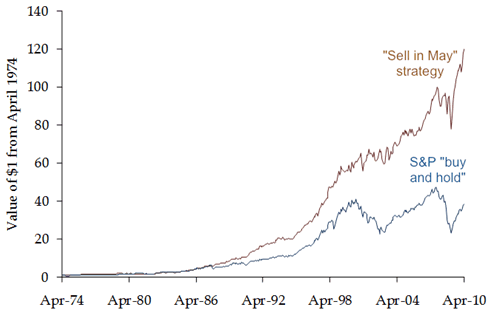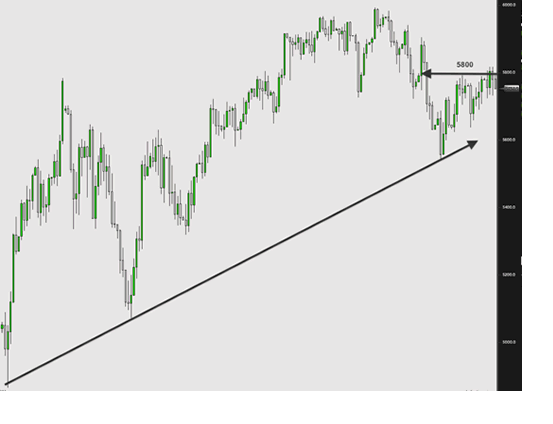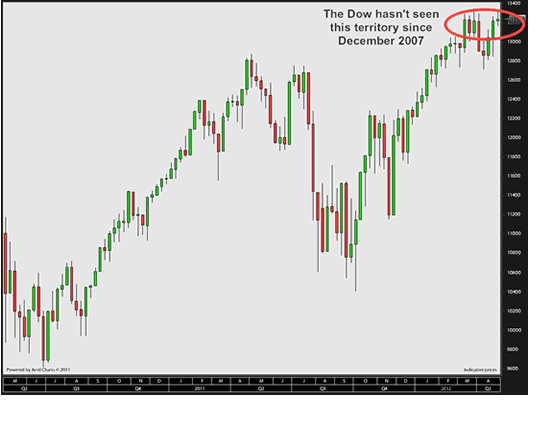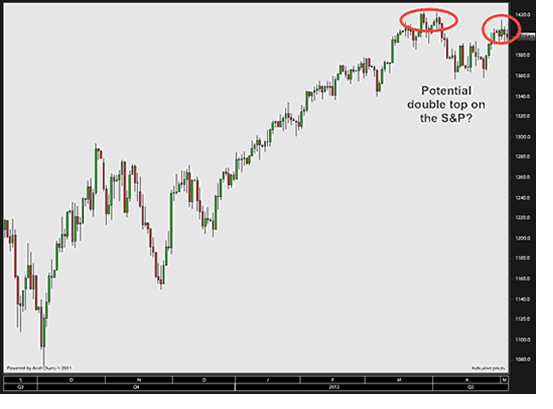 It might not feel like it for normal folk, who are still wrapped up in their winter coats, but for that strange breed that investors are – this is the beginning of the summer.
It might not feel like it for normal folk, who are still wrapped up in their winter coats, but for that strange breed that investors are – this is the beginning of the summer.
And the beginning of the financial silly season.
So, if the markets are about to get skittish, we don’t want to have our capital at risk.
So, I want to take a look at just what those risks are… how valid investors’ fears are… and what we can do to protect ourselves.
Are you ready for the financial Silly Season?
The start of May, according to the old adage (Sell in May and go away, don’t come back until St Leger day) is when investors should sell up their stocks and switch to cash. Getting back into the market in autumn (St Leger’s Day is the second Saturday in September – however, the “get back in” date more commonly cited these days is the end of October.)
And, there’s a lot of research that backs up the idea.
The stock market has traditionally done better over the winter than over the summer.

Why?
Well, there are a few theories …
Some people talk about the holiday season, and how fewer traders are around. As a result, volume is thin and so extreme movements are more likely.
This may explain volatility over the summer, but how could it explain falling values?
That may be seen in crowd behaviour: when shares are risking, we tend to see small daily rises over a long period; when they’re falling, we often see sharp one-day falls. And, it’s possible that when trading is thin on the ground, these sharp falls are steeper, and tend to escalate into more panicked selling.
Or it could be due to end-of-year bonuses, and first-quarter reports helping to lift stocks from November to April, while portfolio “housekeeping” subdues them May through October.
Maybe.
But it doesn’t really seem like something to base an investment strategy on.
It’s difficult to find genuine “apples for apples” comparisons
Alex Dumortier over at Motley Fool has kindly done some sums for us, going back 86 years on the S&P, and (importantly) has included dividend payouts and the relative return you’d have seen in cash.
The differences are less impressive that you might have expected: if you’d sold in May and bought back in October, you’d have made an average annual return of 8.4%. If you bought in May and sold in October, you’d have made 5.1% average return. And if you’d just bought and held – you’d have seen 10% return.
The crux of the matter is that we just don’t have the data to draw a conclusion on this.
Sure, 86 years is a long time – but it’s only 86 instances.
In a more detailed study, Ben Jacobsen of New Zealand University looked at 317 years of FTSE data. Again, this upheld the bullish bent of winter trading, but his headline figures don’t include dividends.
We could spend hours and hours crunching the numbers and looking for an optimum date to sell our stocks and a perfect date to get back in, but I’m not convinced that this would be time well spent.
There’s no doubt that the markets are more bullish over the winter than over the summer.
There’s also no doubt that buying and selling all your shares each year can be a costly exercise in commissions.
So, how can we use “sell in May” without actually selling?
Getting defensive
I’m not talking about selling up your shares in favour of defensive stocks here.
I’m talking about taking defensive spreadbetting positions in the market
This could be done by directly hedging your positions with a bet going the other way in the same sector.
Or it could be done by simply taking a more bearish approach to the market.

Sure, the FTSE chart for the past 6 months isn’t exactly screaming “bear market” at us.
But, it’s been banging its head against 5800 for a while now – a level that it breezed through just a month ago, which is a sign that things aren’t quite a rosy as they were.
The US indices are even more bullish, with both testing levels not seen since 2007.
This is a 2-year chart for the Dow Jones …

However, when we start breaking into new highs, we find the doom-mongers and the naysayers come out in droves.
And with them, they bring increased volatility and sudden panic-ridden sell-offs.
I’m sure I won’t be the first to spot a potential double top forming on the S&P …

I’m not trying to call a top on this bull run, but what I am saying is that we can expect some serious market spooks and volatility over the summer.
The real danger the markets are facing at the moment is from Eurozone elections in Greece and France. Both are looking like they’ll be “renegotiating” their austerity measures, which will inevitably lead to a fresh round of debate about a Eurozone collapse. And we now know all too well the kind of turbulence this causes in the markets.
And it’s exactly this kind of turbulence that we can take advantage of with our short-term trading strategies – while our long-term holds may have to suffer the storm.
